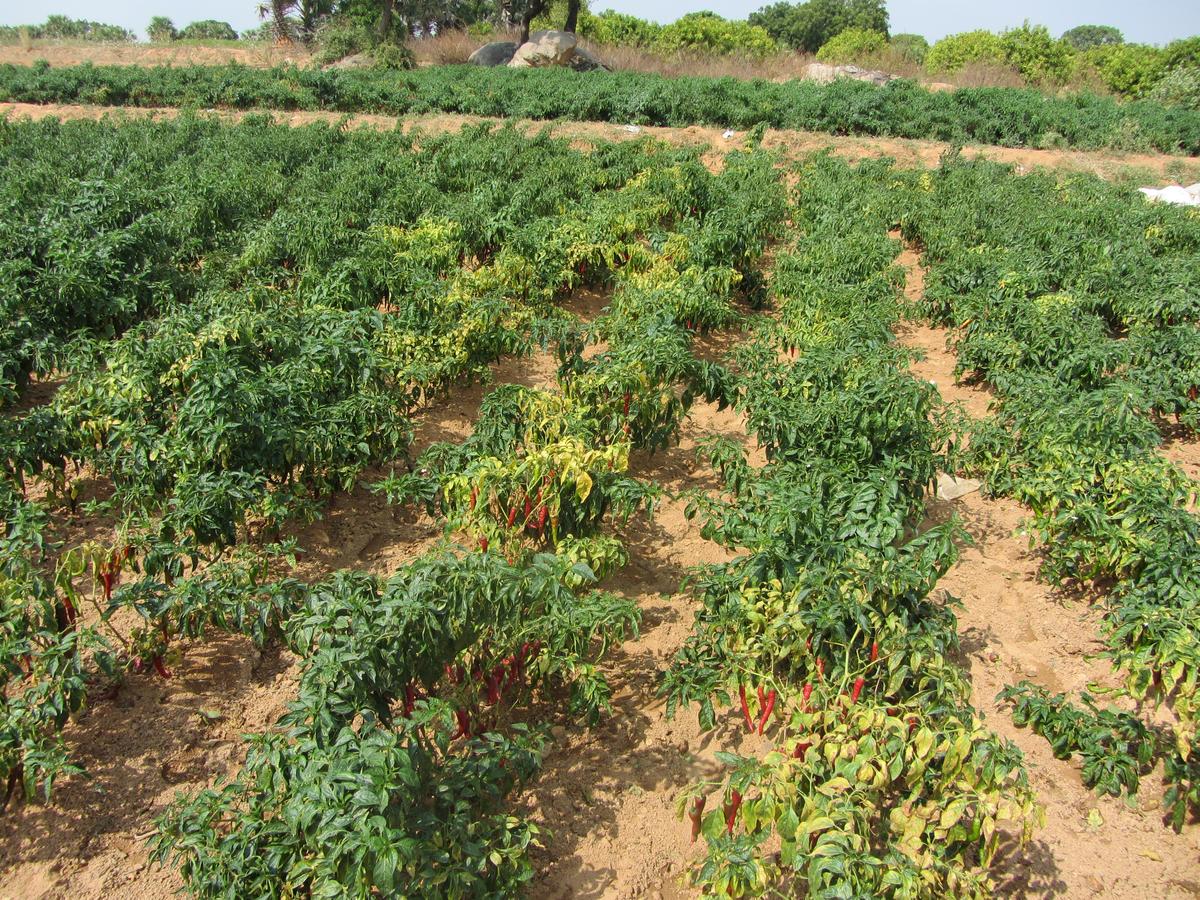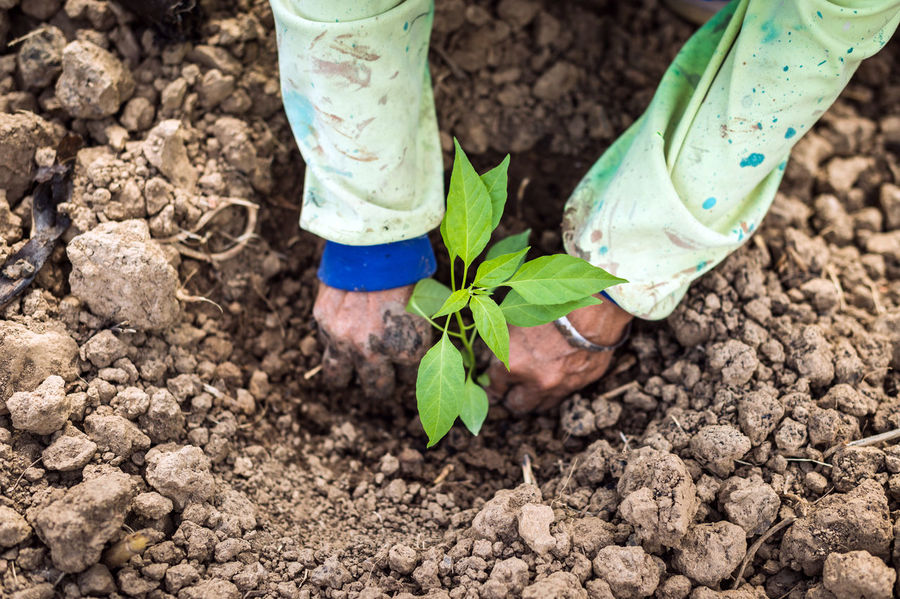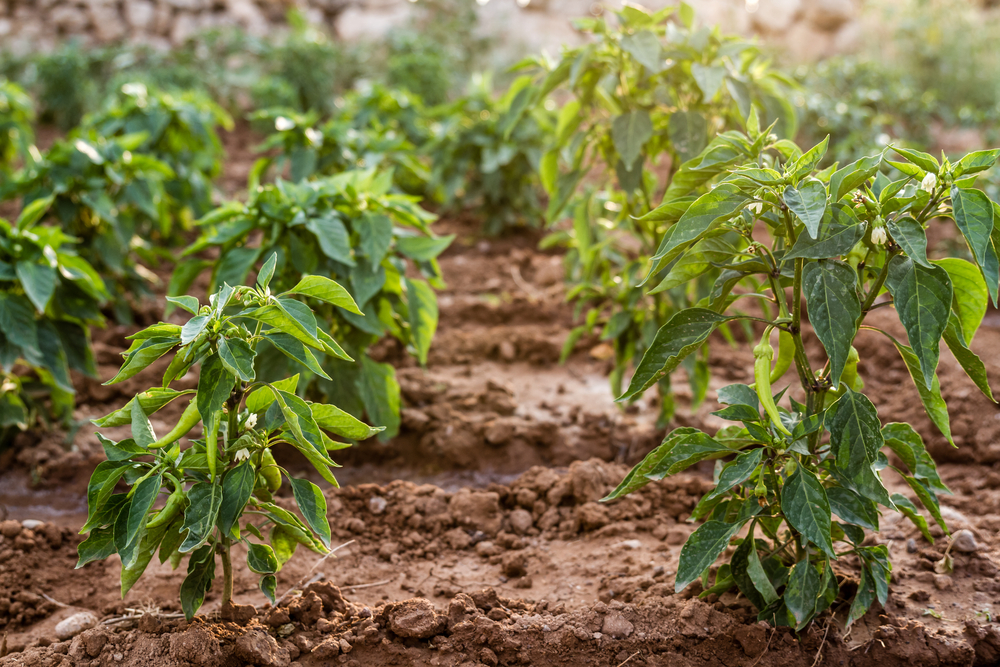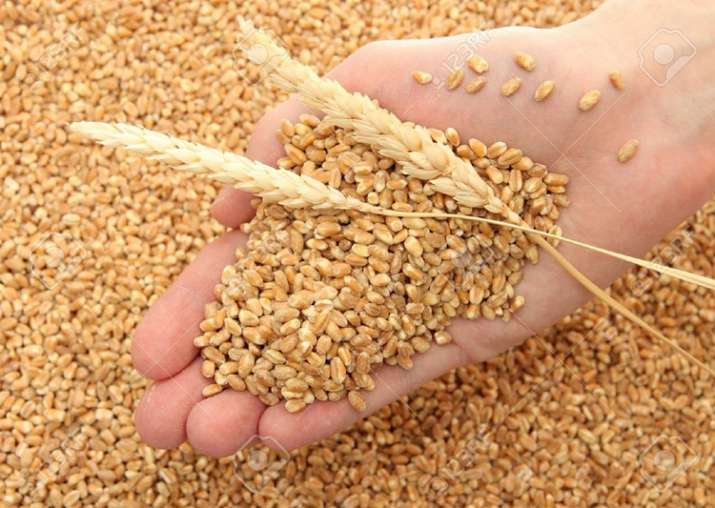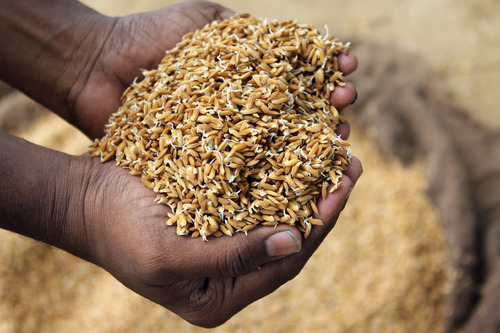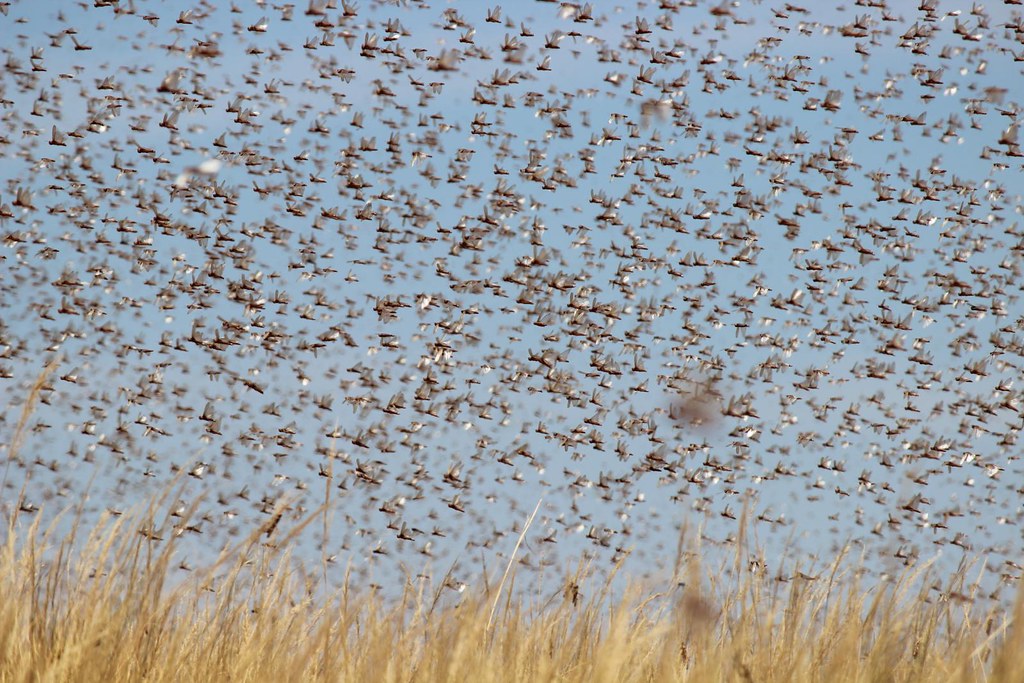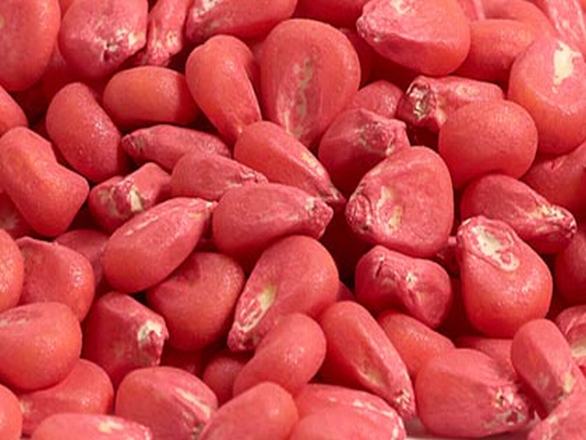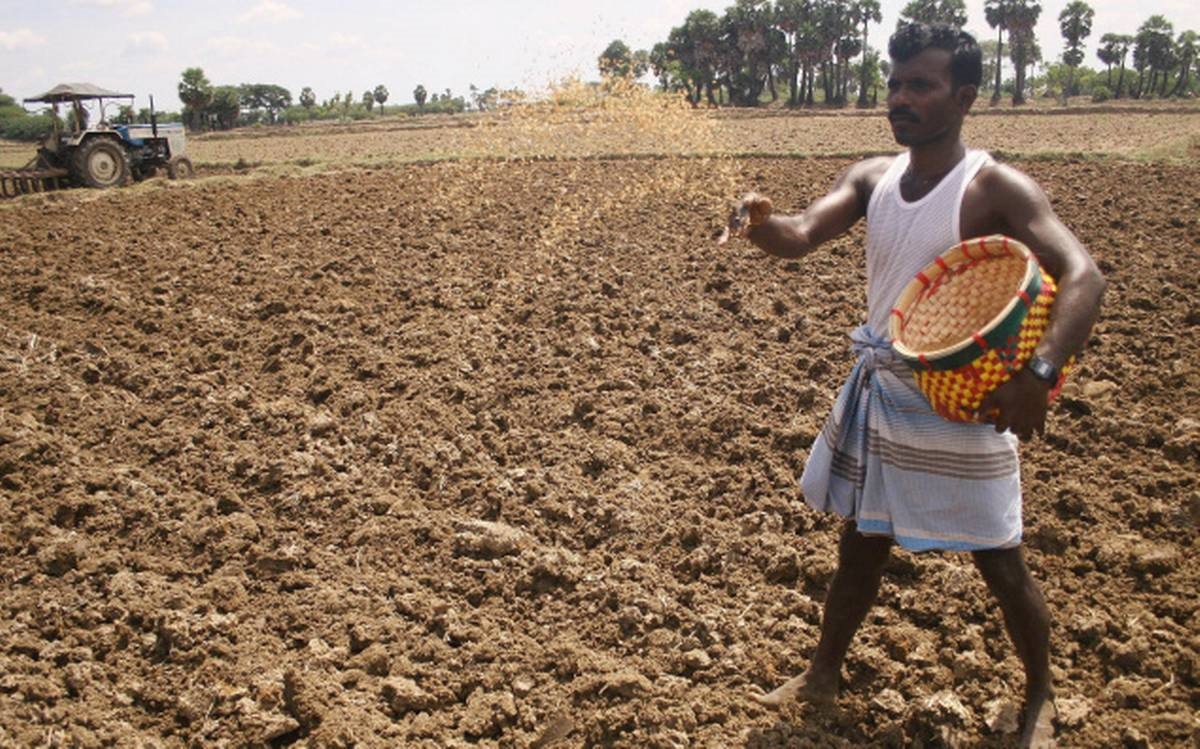- There are mainly different types of weeds in Chilli, it is more outbreaks after the first monsoon rains.
- The following weedicides are used to control the chilli crop weedicides
- Quizalofop ethyl 5% EC @ 400 ml / acre or propquizofop 10% EC @ 400 ml / acre for narrow leaf
- Pendimethalin 38.7% CS @ 700 ml / acre (3 to 5 days) and metribuzin @ 100 g / acre (20-25 days)
- These chemicals can be used against all types of weeds in chilli crops.
- For better results, the amount of water in the solution should be equal for spraying.
- When we use weedicide in the soil, the soil should have proper moisture for best results.
Beneficial message sent by Modi government to farmers on PM-Kisan Yojana
The date of sending the next installment to the farmers under the Pradhan Mantri Kisan Samman Nidhi Yojana has been decided. Under this, the Modi government is going to send the sixth installment of 2000 rupees to the bank account of the farmers from August 1. However, before this installment is sent, a message has been sent to the farmers by the Modi government.
In this message sent by the Modi government, it says- ‘Dear farmer, now you can know the status of your application by calling the helpline number 011-24300606 of PM-KISAN.’ This means that now farmers can get every information related to the application very easily from their registered mobile number.
It is worth mentioning that under the Pradhan Mantri Kisan Samman Nidhi Yojana, till now the government has provided benefits to 9.85 crore farmers. Before sending the installment this time, the Modi government has sent this message to all the farmers, which will benefit them.
Source: Jagran
SharePlanting method of Chilli Seedlings
- After 35 to 40 days of sowing the chilli nursery is ready for transplanting. The appropriate planting time is mid-June to mid-July.
- Before transplanting, light irrigation should be done in the nursery, by doing this the root of the plant does not break, growth is good and the plant gets planted easily. Apart from this, plants should not be kept directly in the sunlight after removing them from the ground.
- It is very important to treat the chilli seedlings before planting from the nursery to the main field. For good growth of the roots of the plant, make a solution in one liter of water at the rate of 5 grams of mycorrhiza per liter.
- After this, deep the roots of the chilli plant in this solution for 10 minutes. Only after adopting this process, plant transplant in the main field.
- Light water should be given in the field immediately after transplanting. For transplanting chilli plants, the distance from the line to line should be 60 cm and plant to plant distance should be 45 cm.
Field Preparation and Soil Treatment of Chilli
- Before planting chilli seedlings, first of all, a deep plowing should be done in the field with a soil-turning plow. By doing this, the harmful insects present in the soil, their eggs, the pupa stage of the insect, and the spores of the fungi are also destroyed.
- After plowing the field 3 to 4 times, the field should be leveled. After the final plowing, a gramophone offering ‘Chilli Samriddhi Kit’ with a quantity of 5.3 kg should be mixed with 100 kg of FYM per acre and then lightly irrigate it.
- This ‘Chilli Samriddhi Kit’ will become the protective shield of your chili crop. In this kit, you will get everything that is needed by the chili crop. This kit has many products attached.
- The Chilli Samriddhi Kit consists of four types of bacteria ‘nitrogen fixation bacteria, PSB, and KMB.zinc bacteria solubilize Insoluble zinc and makes it available to plants. It is one of the most important micronutrients for plant growth.
- Chilli Samriddhi Kit kills pathogens that occur in soil and seeds, helps in the growth of flowers, fruits, leaves, etc. as well as helps in the growth of white roots.
Record of MP farmers, became the largest wheat-earning state in the country
The farmers of Madhya Pradesh have made a big record. This record is made in wheat procurement on support price. Madhya Pradesh has procured the maximum wheat this time. As of June 15, one crore 29 lakh 28 thousand metric tonnes of wheat has been procured in Madhya Pradesh at the support price. This much wheat was not acquired in any state to date and this is the record to date.
Amid prolonged nationwide lockdown due to the Corona epidemic, the Madhya Pradesh government gave top priority to the management of wheat procurement. From March 23 onwards, the Chief Minister held 75 meetings and video conferencing with the district collectors and reviewed wheat procurement daily. The farmers of Madhya Pradesh made a big record, leaving behind the blockages of Corona Lockdown and Natural Storm.
Source: Patrika
ShareHow to do Seed Treatment in Paddy Crop
- By treating seeds in paddy crop, fungal and bacterial diseases spread by fungi and bacteria are controlled.
- To prevent disease, should be used Carbendazim 12% + Mancozeb 64% 2gram/kg seeds Carboxin 37.5% + Thiram@ 2.5gram/kg seeds.
- Phosphate solubilizing bacteria 2 gram + Trichoderma viride 5 gram / kg seed or
- Phosphorus solubilizing bacteria 2 gram + Pseudomonas fluorescens @ 5gram / kg seed rate should be sown only after seed treatment.
- After that spread the seeds in a flat shady place and cover them with soaked jute sacks.
- Sowing immediately after seed treatment, it is not advisable to keep the seed for too long.
- Then sow the treated seed evenly. Keep in mind that sowing the seeds in the evening because of high temperature increases the chances of destroying germination.
How to prepare a paddy nursery
- Nurseries should be planted in 1/10 part of the field for an acre. It is difficult to manage large parts of the nursery.
- After 2 to 3 times plowing, level the field Make proper arrangements to drain water from the field.
- For the nursery, it is right to make beds between 1.0 to 1.5 meters wide and 4 to 5 meters long.
- Treat seed before sowing in the nursery.
- Use 100 kg of well-decomposed cow dung FYM in the nursery at the rate of 10 kg / sq meter with humic acid @ 100 gram /sq.meter.
Locust Team’s big attack on Bhopal, heavy damage to moong and vegetable crops
For the past few weeks, locust attacks have been taking place in several districts of Rajasthan and Madhya Pradesh. In this episode, locusts attacked Madhya Pradesh’s capital Bhopal on Sunday evening. Millions of locusts spread from Hoshangabad Road to Barkheda Pathani, AIIMS and Awadhpuri areas.
According to reports, the locust team entered Bhopal via Vidisha from Berasia. On Saturday night, the administration received news of the locust in Berasia. From Berasia to Vidisha Naka, the Agriculture Department had made arrangements to stop the locusts, but on Sunday evening the locust team entered Bhopal.
However, the Agriculture Department is making arrangements to deal with the locust team. For this, the Agriculture Department has prepared a team who will kill them by spraying chemical on locusts. For this, help of fire brigade will also be taken.
Before Bhopal, locust teams damaged crops in Vidisha. It is being told that the grasshopper team has attacked here for the fourth time. Here, the crops of moong and vegetables have suffered heavy losses in 6 villages.
Source: Bhaskar
ShareSeed Treatment in Maize
- Seed treatment in Maize crops helps in controlling the fungal and bacterial diseases spread by fungus and bacteria.
- At the time of germination of seeds, after germination, this protects against seeds soil-borne and seed-borne fungus diseases and pests.
- The growth and maturity of the entire crop are the same.
- Biological treatment: –
- PSB bacteria + Trichoderma viride @ 2gram / kg seed + 5gram / kg seed
- chemical treatment:-
- Carbendazim 12% + Mancozeb 63% WP @ 2.5gram / kg seed
- Carboxin 37.5% + Thiram 37.5% WP @ 2.5 gram / kg seed or
- Imidacloprid 48% FS @ 5 ml / kg seed or
- Cyantraniliprole 19.8% + Thiamethoxam 19.8% FS @ 6 ml / kg seed
- Seed treatment is also very important for the control of fall armyworm in maize.
- For seed treatment, first, select the seeds for sowing and treat the required quantity of seeds and sow the seeds immediately after treatment. Do not store the seed.
Fertilizer management at the time of sowing
- The correct use of fertilizer at the time of sowing is very important for the good production of the soybean crop, which is beneficial for the germination of the crop.
- For fertilizer management, use MOP @ kg / acre + DAP @ 40 kg / acre + Caledon 5 kg / acre + Dantotsu 100 g / acre + zinc sulfate at 3 kg / acre + Wokovit @ 3 kg / acre.
- Farmers can also use Soya Samdhari Kit.
- It is very important to have proper moisture in the field at the time of sowing.

